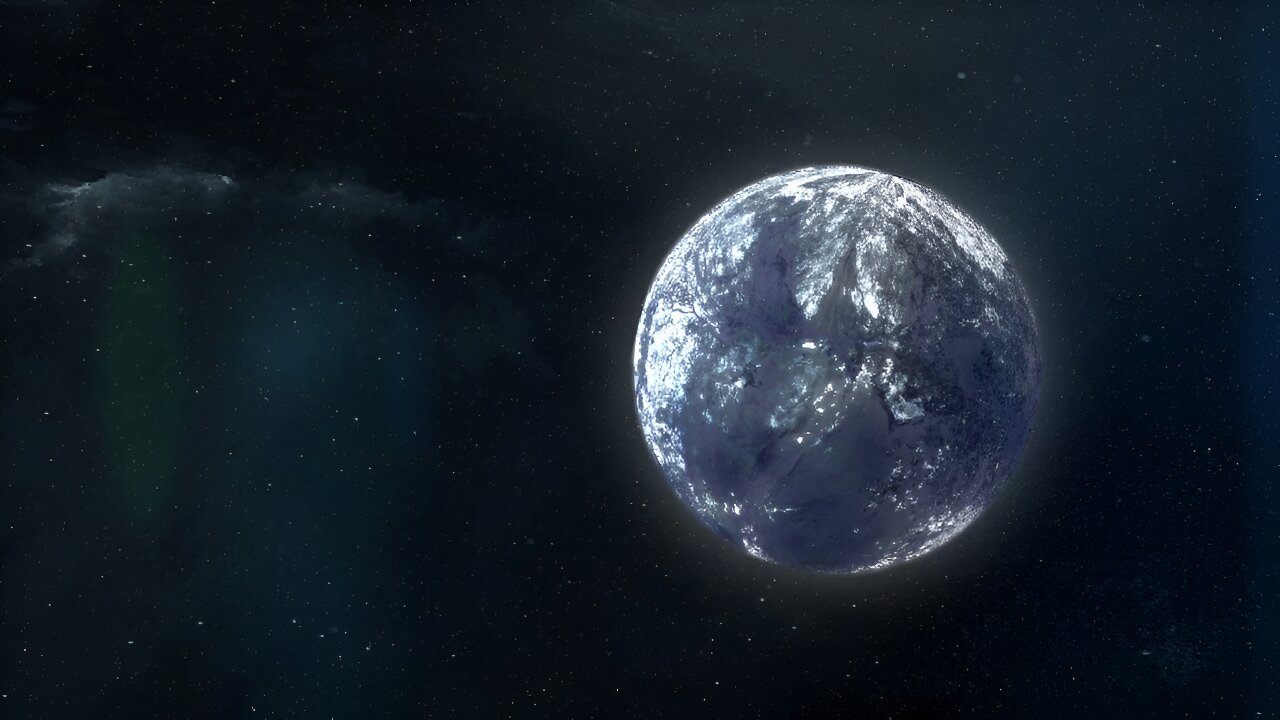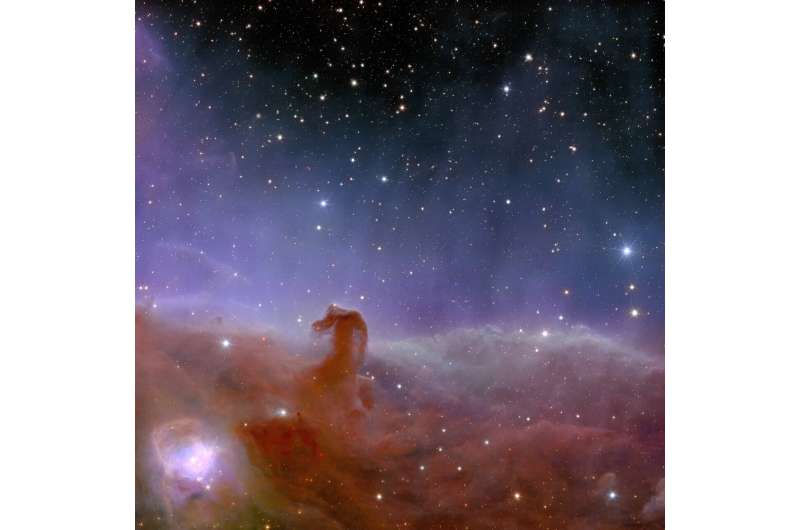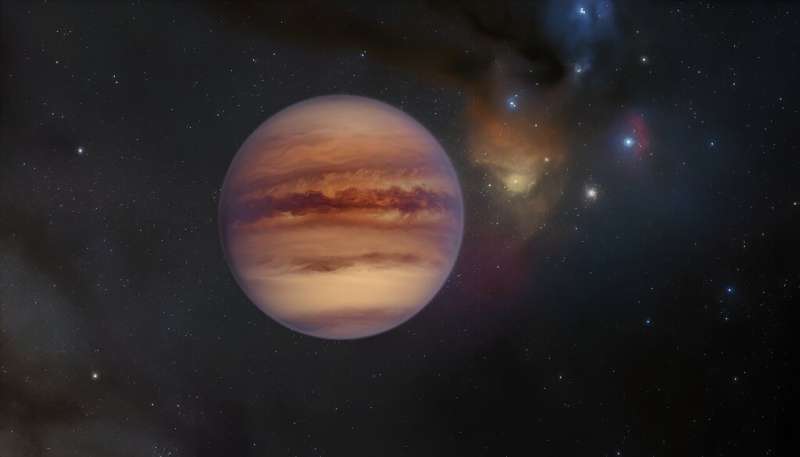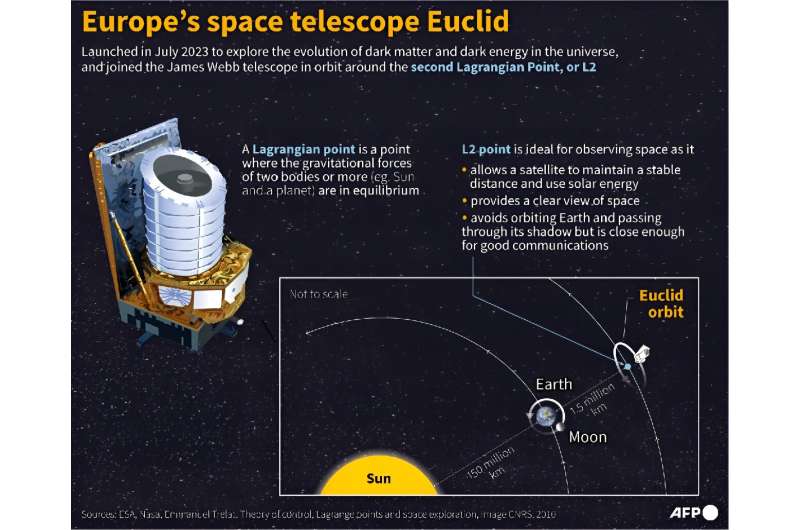
A NASA flyer shows an ice-covered planet that has the mass of Earth. Scientists estimate there may be trillions of rogue planets in the Milky Way Galaxy, and there is a possibility that some of them could host life.
The Euclid Space Telescope has discovered seven more rogue planets, shedding light on the dark and lonely worlds that float freely through the universe untethered to any star.
Without connection to a star, as the Earth is connected to the sun, there are no days or years on these planets, which suffer in perpetual night.
However, scientists believe there is a chance they could host life, and they estimate there may be trillions scattered throughout the Milky Way.
Last week, the European Space Agency released the first scientific results from the Euclid Telescope since the mission launched in July.
Among the discoveries are seven new free-floating planets and gas giants with a mass at least four times that of Jupiter.
It was spotted in the Orion Nebula, the closest star-forming region to Earth, about 1,500 light-years away.
Euclid also confirmed the existence of dozens of other rogue planets that had been discovered previously.
This is likely just “the tip of the iceberg,” said Spanish astronomer Eduardo Martin, lead author of the pre-print study published on arXiv.org on Friday.
They do not reflect starlight, so spotting rogue planets is like “finding a needle in a haystack,” Martin told AFP.
Newer planets, like those discovered by Euclid, are hotter, which makes them a little easier to see.

The planets were spotted during Euclid’s observations of the Horsehead Nebula, which were depicted in a color image released in November.
“Dread and mystery”
Some research suggests there are about 20 rogue planets per star, which could number into the trillions in our home galaxy alone.
Since there are hundreds of billions of galaxies throughout the universe, it is difficult to understand the possible number of free worlds.
When NASA’s Roman space telescope launches in 2027, it’s expected to find more rogue planets, which could provide clarity on how many planets could be out there.
These strange worlds often evoke “feelings of awe and mystery,” said Gavin Coleman, an astronomer at Queen Mary University of London who was not involved in Euclid’s research.
“We all grew up with the sun in the sky, so to think of a planet drifting through space without a star on its horizon is fascinating,” he told AFP.
But not all rogue planets wander alone. Four of the more than 20 planets confirmed by Euclid are believed to be binaries, that is, two planets orbiting each other in a single system.
Can they host life?
If rogue planets are habitable, they could be a prime target in humanity’s search for extraterrestrial life.

If rogue planets are habitable, they could be a prime target in the search for extraterrestrial life.
“It’s possible that some of our closest neighbors are rogue planets,” Martin said.
Because they lack heat from a nearby star, free-floating planets are thought to be cold and have icy surfaces.
This means that any life-sustaining energy must come from within the planet.
Coleman noted that most of Neptune’s energy comes from within.
Geothermal vents allow animals to survive on land that has never seen sunlight before.
Even under the best conditions, this extreme isolation would likely only be able to support bacterial and microbial life, Coleman said.
The advantage of being alone
Rogue planets can be thought of as traversing a single path through the universe.
But “being around a star has its downsides,” said study co-author Christopher Conselici, a professor of extragalactic astronomy at the University of Manchester in the United Kingdom.

European Euclid Space Telescope.
A certain downside comes to mind.
Once the Sun becomes a red giant — in an estimated 7.6 billion years — it will expand dramatically, engulfing Earth.
Rogue planets don’t have to worry about eventually being destroyed by a star. “These things will last forever,” Conselisi told AFP.
“If you don’t mind the cold temperatures, you can survive on these planets forever.”
The Euclid study also provided clues about how rogue planets were created, Conselich said.
Some of them could form in the outer part of the solar system before breaking off from their star and floating away.
But he said the study suggests that many rogue planets may have formed as a “natural byproduct” of the star formation process.
This indicates “a close relationship between stars and planets and how they form,” he said.
He added: “There are no definitive answers yet.”
© 2024 Agence France-Presse
the quote: Starless Lonely Forever: More ‘rogue’ planets discovered (2024, May 29) Retrieved May 29, 2024 from https://phys.org/news/2024-05-starless-rogue-planets.html
This document is subject to copyright. Notwithstanding any fair dealing for the purpose of private study or research, no part may be reproduced without written permission. The content is provided for informational purposes only.




More Stories
Boeing May Not Be Able to Operate Starliner Before Space Station Is Destroyed
Prehistoric sea cow eaten by crocodile and shark, fossils say
UNC student to become youngest woman to cross space on Blue Origin